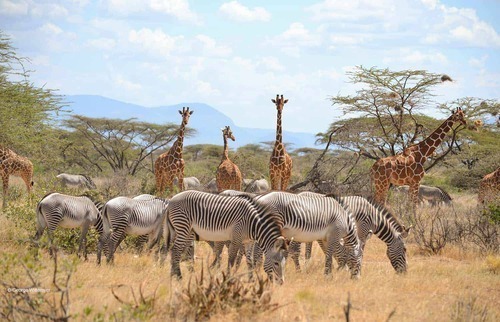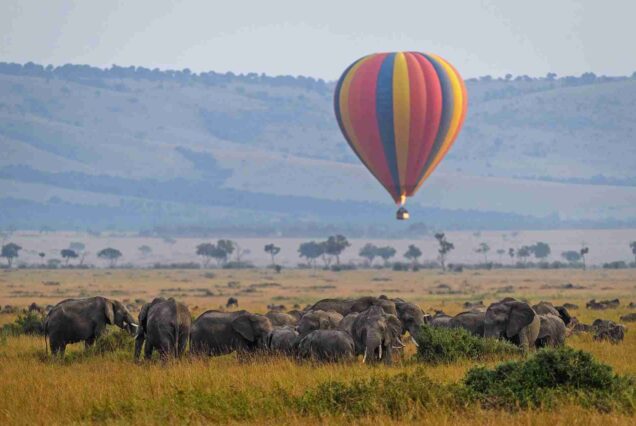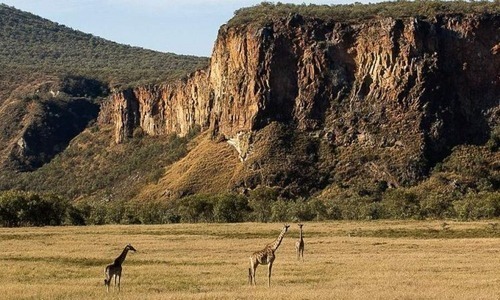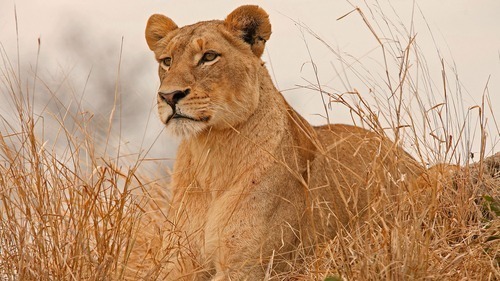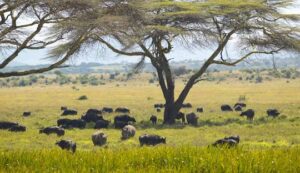The best sustainable travel destinations in Kenya boast vast wildlife amid breathtaking landscapes.Naicef shows you the green travel destinations, sustainable tourism in Kenya and the sustainable travel destinations.
Did you know sustainable travel is not just a trend but it is a necessity for preserving Kenya’s unique ecosystems?
Also, ‘Sustainable travel ensures that future generations can enjoy our natural heritage.”
These are words from Dr. Njeri Mungai, a prominent environmentalist in Kenya.
So for the best tour packages to any of these sustainable travel destinations, contact +254799922277 or email my@naicef.com.
Moreover, with every travel experience you take with Naicef, you contribute to sustainable environmental and local community programs.
This article will explore the best sustainable destinations in Kenya.
In addition, we will explain the environmental impact, community benefits and why they stand out in 2025.
Sustainable Tourism In Kenya
To explain, sustainable tourism in Kenya aims to create a positive relationship between tourists and local communities.
Moreover, there needs to be a positive relationship with the environment.
In addition to preserving the country’s rich natural and cultural heritage.
“Sustainable tourism is crucial for the conservation of our natural resources and the empowerment of local communities.
It ensures that tourism benefits the environment and the people who depend on it.”
This statement comes from a well-known advocate for sustainable tourism in Kenya, Madam Judy Kepher Gona.
A statistical report from the Kenya Tourism Board indicated 67% of travellers prefer eco-friendly accommodations and activities.
This is a positive growth towards sustainability in consumers’ travel preferences.
Therefore, there is a growing demand for responsible tourism practices in Kenya.
What is a Sustainable Travel Destination?
A destination is said to be sustainable if it upholds environmental conservation, socio-cultural preservation and has an economic impact.
This is because the destination will be able to achieve long-term benefits for the people, planet and profit.
Sustainability is key to Kenya’s tourism because, currently, it is a hot global issue.
Not to mention, travellers are becoming eco-conscious of how they travel.
This increases the demand for eco-friendly stays and activities by the travellers.
For this reason, EcoTourism Kenya institution is mandated to certify accommodations that practice sustainability.
The certified lodges are categorised as gold, silver, or bronze based on their audit performance.
Best Sustainable Travel Destinations In Kenya
Shown below are the best sustainable travel destinations in Kenya
1. Masai Mara National Reserve
The Masai Mara National Reserve is renowned for its extraordinary wildlife and acts as a leading example of sustainable tourism in Kenya.
This is one of the best sustainable travel destinations in Kenya that attracts numerous visitors.
Dr. Judy Kepher Gona says ‘Sustainable tourism in the Masai Mara ensures we safeguard our natural resources while allowing visitors to experience our beautiful wildlife.’
Did you know the reserve receives over 300,000 visitors annually?
The Masai Mara stands out as a top green travel destination due to initiatives that promote environmental sustainability.
In fact, 30% of lodges and camps in Masai Mara are going green.
This means the best safari camps and lodges are practising sustainable practices for the long term.
Furthermore, these safari lodges and camps are mostly Gold certified by the Eco Tourism Kenya.
In addition, about 60% of tourism revenue is shared with the local communities.
This is effective in providing direct economic benefits.
Additionally, funding is available for conservation that supports community-based tourism initiatives and wildlife conservation efforts.
With this in place, sustainable tourism in Kenya, especially the Masai Mara, will be effective for the long term.
Not to mention, most lodges, camps and tour operators are opting for electric safari vehicles in the Mara!
When travellers recognise the effects of their choices, they become advocates for sustainability in the Mara and beyond.
These words are echoed by Madam Judy Kepher Gona, founder of Sustainable Travel and Tourism Africa (STTA Kenya)
See the best luxury safari camps and lodges in Kenya!

2. Amboseli National Park
The Elephant Kingdom, Amboseli National Park, is one of Kenya sustainable travel destinations.
Mount Kilimanjaro is perfectly seen from the Amboseli National Park, creating a breathtaking backdrop!
Annually, the park attracts about 200,000 visitors, contributing to Kenya’s tourism economy.
With rising visitor numbers, tourists, locals, and facilities need to adopt sustainable tourism practices to protect our destinations for future generations.
This, in turn, will ensure that Amboseli National Park is one of Kenya’s green travel destinations.
Dr. Paula Kahumbu states, ‘Sustainable tourism in Amboseli is crucial for the survival of iconic species like the Elephant. It helps fund conservation initiatives that directly benefit wildlife.’
Albeit, the local community is not left behind.
According to Madam Judy Kepher Gona, engaging local communities in tourism is essential.
All in all, about 60% of the tourism revenue goes to the local Maasai communities.
The revenue helps the communities in terms of healthcare and education.
In addition, a significant portion goes to the local communities via community-based projects and local communities.
About 40% of the safari camps in Amboseli implement sustainable tourism practices by having solar energy and waste reduction systems put in place.
Most camps and lodges go the extra mile to get eco-certifications.
These sustainable actions help reduce the ecological footprint of tourism.
Dr. David Western states, ‘By implementing green practices, we can protect our environment while offering unforgettable experiences to visitors.’
Not to mention, a reasonable portion goes towards wildlife protection and habitat preservation.
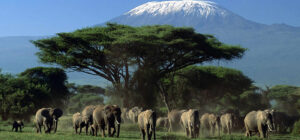
3. Lamu Archipelago
The famous Lamu archipelago is a UNESCO World Heritage Site and a tourist attraction in Kenya.
Lamu archipelago is rich in Swahili culture, marine life and Swahili architecture.
The Lamu archipelago attracts about 50,000 visitors annually, boosting Kenya’s economy and promoting sustainable tourism.
The archipelago has 30 historical sites, which give it its cultural identity.
Dr. Amina Abdi states’ Sustainable tourism in Lamu allows visitors to engage with the rich heritage while ensuring that our traditions are preserved for future generations.’
Surrounded by marine parks that protect the coral reefs, sustainable tourism initiatives aim to minimise environmental impact.
Dr. John Kamau emphasises, ‘Tourism can be a powerful tool for marine conservation. In Lamu, responsible travel helps fund initiatives that protect our fragile ecosystems.’
Now, 70% of the tourism revenue is allocated to the local communities.
This, in turn, supports healthcare, infrastructure and education.
Dr. Njeri Mungai states,’ In Lamu, this partnership enhances both conservation and cultural preservation’
This is true in that economic benefits are shared via tourism-related activities.
50% of the hotels in Lamu ensure sustainable tourism practices.
This is made possible by use of local sourcing, solar energy and no plastics.

4. Mount Kenya
Recognised as a UNESCO Biosphere Reserve and the second-highest peak in Africa, Mt Kenya has breathtaking ecosystems.
Mount Kenya National Park is home to the endangered Mountain Bongo.
The park attracts over 30,000 visitors annually while ensuring sustainable tourism practices.
Dr. Wangari Maathai stated, ‘Sustainable tourism is essential for protecting our natural heritage. In places like Mount Kenya, it can be a powerful tool for conservation.’
Just like a sustainable travel destination, a portion of the tourism revenue supports community initiatives such as education, health and infrastructure.
‘Empowering local communities through sustainable tourism fosters conservation and cultural pride, ‘ states Dr. Njeri Mungai.
Over 40% of the accommodations around Mount Kenya implement sustainable tourism practices.
These practices include the use of renewable energy, the conservation of water and waste reduction.
Mount Kenya offers a chance to get intimate with nature through adventures like hiking and trekking.
Once tourists see the beauty of the park, it inspires a new generation of conservationists.

5. Lake Naivasha
Lake Naivasha is located in the Great Rift Valley of Kenya, bursting with vibrant ecosystems.
This lake is home to vast bird species while supporting hippos and different species of fish.
The lake attracts over 200,000 visitors annually therefore while ensuring sustainable tourism practices.
Additionally, about 60% of revenue is used to support local communities by funding education and healthcare.
Community involvement creates a sense of ownership and championing for the conservation of their lands.
About 30% of lodges and camps around the lake implement sustainable tourism practices.
These practices include the use of renewable energy, the conservation of water and waste reduction.
Because of tourism in the region, the revenue is used to support local businesses and community-based projects.
How To Travel Sustainably in Kenya
Wondering how to travel sustainably in Kenya? Here are a few tips.
1. Educating yourself
Before visiting the desired destination, one must understand the destination well.
This is in terms of the social and environmental issues to travel with a positive attitude.
2. Respect Local Cultures
Try as much as possible to learn about the cultures.
An example is seeking permission to photograph people and sacred cultural sites.
3. Support The Local Communities
Purchasing the beautiful souvenirs from the locals helps the local community financially.
This, in turn, helps tourists engage in community-based tourism projects that benefit the locals effectively.
4. Choosing Eco-friendly Stays
Choosing eco-certified accommodations while visiting Kenya is a way of travelling sustainably.
5. Responsible Safari Drives
It is mandatory to follow the guidelines for wildlife viewing.
The Kenya Wildlife Service strictly governs the guidelines.
The guidelines are put up at the entrance and emphasised by a professional guide inside the park/reserve.
Conclusion
In conclusion, for a destination to be labelled as one of the green travel destinations, it needs to meet certain criteria.
The criteria are such as
- For the people
- For the planet
- For the profit
All in all, sustainability drives the motive to ensure businesses can withstand the long run in the industry.
Therefore, getting the necessary certifications acts as a plus one to show businesses’ credibility in the industry.
With Naicef, every tour you take with us promotes responsible tourism.
For the best safaris in Kenya and beyond, contact us via my@naicef.com or call +254799922277 for the best deals!

